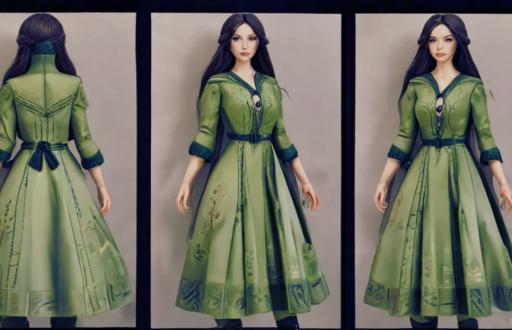Support Local: Sustainable Clothing Brands Near You
In a world increasingly dominated by fast fashion, the call for sustainable clothing has never been more urgent. As consumers, we wield the power to make choices that not only reflect our personal style but also support our communities and the environment. Enter local production—a movement that champions the artisans and brands right in our backyard. This article delves into the significance of supporting local sustainable clothing brands, highlighting their impact on the economy, the environment, and our wardrobes.
The Importance of Local Production
Local production is more than just a buzzword; it’s a philosophy rooted in community, sustainability, and ethical practices. When you choose to buy from local brands, you’re not just purchasing a garment; you’re investing in your community. These brands often prioritize ethical labor practices, ensuring fair wages and safe working conditions for their employees. This contrasts sharply with the often exploitative practices of large, multinational corporations.
Moreover, local brands tend to have a smaller carbon footprint. By sourcing materials nearby and manufacturing locally, they reduce the need for long-distance transportation, which is a significant contributor to greenhouse gas emissions. This commitment to sustainability is not merely a marketing strategy; it’s a core value that resonates with consumers who are increasingly aware of their environmental impact.
The Rise of Sustainable Fashion
Sustainable fashion is a response to the environmental and social issues plaguing the fashion industry. It encompasses a range of practices, from using eco-friendly materials to implementing fair trade principles. Local brands often lead the charge in this movement, offering innovative solutions that prioritize both style and sustainability.
Consider the use of organic cotton, recycled materials, and natural dyes. These elements not only reduce environmental harm but also create unique, high-quality products that stand the test of time. In a market flooded with disposable fashion, local sustainable brands offer a refreshing alternative—pieces that are crafted with care and designed to last.
Spotlight on Local Sustainable Brands

1. EcoThreads
Nestled in the heart of your city, EcoThreads is a pioneer in sustainable fashion. With a focus on organic materials and ethical production, this brand offers a range of stylish clothing that doesn’t compromise on quality. From casual wear to elegant pieces, EcoThreads ensures that every item is made with love for both the planet and its people.
2. GreenStitch
GreenStitch takes sustainability a step further by incorporating upcycled materials into their designs. Each piece tells a story, transforming discarded fabrics into fashionable garments. Their commitment to reducing waste is evident in every collection, making them a favorite among eco-conscious consumers.

3. Local Loom
Local Loom celebrates the artistry of local artisans, collaborating with skilled craftspeople to create unique, handcrafted clothing. By supporting traditional techniques and fair labor practices, they not only preserve cultural heritage but also provide a sustainable alternative to mass-produced fashion.
Strengths:
- Clear and Concise Language: The writing is easy to understand and avoids jargon, making it accessible to a wide audience.
- Well-Organized Structure: The article flows logically, starting with an introduction, then discussing the importance of local production, the rise of sustainable fashion, spotlighting local brands, discussing the economic impact, and concluding with a summary and FAQ.
- Strong Arguments: The article effectively presents the benefits of supporting local sustainable brands, including ethical labor practices, reduced environmental impact, economic benefits for the community, and higher quality products.
- Compelling Examples: The inclusion of fictional brand examples (EcoThreads, GreenStitch, Local Loom) helps illustrate the concepts and makes the article more engaging.
- Helpful FAQ: The FAQ section addresses common questions and provides practical information for readers.
Suggestions for Improvement:
- Real-World Examples: While the fictional brands are helpful, including real examples of local sustainable clothing brands (even if they’re not in a specific location, mentioning examples from different regions could be beneficial) would add credibility and provide readers with concrete starting points for their own research. You could mention resources like online directories or certifications that help identify sustainable brands.
- Visuals: Adding images or videos would significantly enhance the article’s appeal. Consider including photos of sustainable clothing, local workshops, or even infographics illustrating the environmental benefits of local production.
- Call to Action: While the conclusion encourages readers to consider local options, a stronger call to action could be more effective. For example, you could suggest specific actions like:
- “Visit your local farmers market or craft fair to discover local artisans.”
- “Search online for ‘sustainable clothing brands in [your city/region]’.”
- “Follow sustainable fashion influencers or organizations on social media for inspiration.”
- Expand on “Sustainable Materials”: The FAQ mentions common sustainable materials, but the article could benefit from a slightly more detailed explanation of why these materials are considered sustainable. For instance, explaining the water and pesticide usage associated with conventional cotton versus organic cotton.
- Consider Addressing Potential Barriers: Briefly addressing potential barriers to purchasing sustainable clothing, such as price or limited availability, could make the article more realistic. You could then offer solutions, like shopping secondhand or supporting brands during sales.
Specific Examples of Changes:
- Instead of just saying “You can search online directories,” you could add: “Websites like Ethical Consumer or Good On You provide ratings and information on clothing brands’ ethical and environmental practices.”
- In the section about sustainable materials, you could add: “Organic cotton, grown without harmful pesticides and synthetic fertilizers, uses significantly less water than conventional cotton and is better for the environment and the farmers who grow it.”
The Economic Impact of Supporting Local Brands
When you support local sustainable clothing brands, you’re not just making a fashion statement; you’re contributing to the local economy. Money spent at local businesses tends to circulate within the community, creating jobs and fostering economic growth. This ripple effect can lead to a more vibrant, resilient local economy, one that prioritizes sustainability and ethical practices.
Furthermore, local brands often engage in community initiatives, from environmental clean-ups to educational programs. By supporting these businesses, you’re also supporting their efforts to give back to the community, creating a positive impact that extends far beyond the realm of fashion.
Conclusion
In a landscape dominated by fast fashion, supporting local sustainable clothing brands is a powerful way to make a difference. By choosing to invest in your community, you’re not only enhancing your wardrobe with unique, high-quality pieces but also contributing to a more sustainable future. The next time you’re in the market for new clothing, consider the local options available to you. Your choices matter—let them reflect your values.
FAQ
Q1: Why should I choose local sustainable brands over fast fashion?
A1: Local sustainable brands prioritize ethical labor practices, reduce environmental impact, and often produce higher-quality garments that last longer. Supporting them helps foster community growth and sustainability.
Q2: How can I find local sustainable clothing brands near me?
A2: You can search online directories, visit local markets, or check social media platforms where many local brands promote their products. Additionally, community events often feature local artisans and sustainable brands.
Q3: Are sustainable clothing brands more expensive?
A3: While some sustainable brands may have higher price points due to ethical production practices, many offer affordable options. Investing in quality pieces can save you money in the long run, as they tend to last longer than fast fashion items.
Q4: What materials do sustainable clothing brands typically use?
A4: Sustainable brands often use organic cotton, hemp, Tencel, recycled materials, and natural dyes. These materials are chosen for their lower environmental impact and durability






